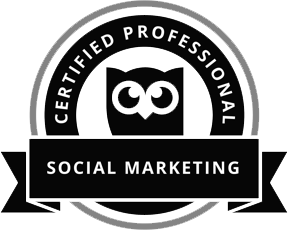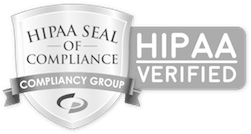“Discover how storytelling can transform your marketing for healthcare non-profits and inspire more donors to support your cause.”
Let’s be honest. Running a healthcare non-profit is tough. You’re on the front lines, tackling some of society’s most pressing health issues. You see the problems, you have the solutions, but one giant hurdle always remains: funding. You’re competing not just with other non-profits for donor attention but with everything—Netflix, family budgets, the daily news cycle. So, how do you cut through the noise? How do you make someone pause their scrolling, listen, and care enough to give?
The answer isn’t a bigger spreadsheet or a more detailed pie chart of your expenses. It’s something far more ancient and powerful.
It’s storytelling.
Forget the jargon and the clinical reports for a moment. At its core, marketing for healthcare non-profits is about human connection. It’s about taking your incredible, life-changing work daily and translating it into a narrative that resonates deep within a potential donor’s heart. This article is your guide to doing just that. We’ll explore why stories work, where to find them within your organization, and how to craft them into powerful tools that build trust, foster community, and ultimately, inspire people to join your cause.
Why Your Brain is Hardwired for Stories, Not Statistics
Think about the last time a statistic truly moved you. Can you even remember it? Probably not. Now, think about the last time a story made you cry, laugh, or feel a surge of inspiration. It’s much easier to recall, isn’t it?
There’s a scientific reason for this. When we hear a list of facts or numbers, only the language-processing parts of our brain light up (Broca’s and Wernicke’s areas). Our brain works to decode the words, but it’s a passive, analytical process.
However, when we hear a story, our brain reacts completely differently. If you read a story about someone running through a field, your motor cortex, the part of your brain that controls movement, activates. If the story describes the delicious smell of baking bread, your sensory cortex lights up. A well-told story allows the listener to “experience” the events for themselves. It’s a full-brain workout.
A couple of key chemicals power this phenomenon:
- Oxytocin: Known as the “empathy hormone,” oxytocin is released when we connect to others. Compelling stories trigger their release, especially those with relatable characters facing a struggle. This chemical fosters feelings of generosity, trust, and compassion—the very emotions that precede a donation.
- Dopamine: When a story builds suspense and reaches a satisfying or hopeful conclusion, our brain releases dopamine. This feels good, making the experience memorable and creating a positive association with the storyteller—in this case, your non-profit.
Simply put, statistics inform, but stories move. A potential donor might be impressed that your organization helped 1,000 people last year. But they will be moved by the story of just one of those people: the single mother who could finally afford her child’s life-saving medication because of your program, the relief in her eyes, the child’s returning laughter. This is the foundation of emotional marketing for non-profits. People don’t give to faceless organizations; they offer to help other people. Your job is to make that connection real.
The Treasure Hunt: Finding Your Organization’s Most Powerful Stories
Every non-profit is a goldmine of stories. You just need to know where to dig. You don’t need to invent anything; you just need to listen. Your most valuable assets aren’t in a bank vault; they’re walking the halls of your clinic, answering your phones, and living in the communities you serve. Let’s look at where to find these narrative treasures.
The Beneficiary’s Story: The Heart of Your Mission
This is the most direct and consequential story you can tell. It’s the “proof” of your impact, shown through the eyes of someone whose life is better because you exist. A great beneficiary story isn’t just a testimonial; it’s a journey. To structure it for maximum impact, follow this simple arc:
- The Before: Introduce the hero of your story. Who are they? What was their life like? Crucially, what was the specific, tangible health crisis they faced? Paint a picture of their struggle, their fears, and the barriers they were up against. For example, don’t just say, “Maria couldn’t afford her insulin.” Describe the daily fear, the difficult choices she had to make between medicine and food, and the physical toll the uncontrolled diabetes was taking on her body.
- The Intervention: This is where your organization enters the narrative. How did they find you? What specific service did you provide? Introduce a staff member or volunteer by name. For instance, “That’s when she met Sarah, a patient advocate at our community clinic.” This makes the interaction personal and real. Describe the process—the consultation, the application for aid, and the moment she received her first free supply of insulin.
- The After (The Transformation): This is the resolution. What has changed for Maria? It’s not just about her blood sugar levels being stable. It’s about the ripple effect. She has more energy. She can play with her grandchildren again. She’s no longer living under a cloud of constant anxiety. She has hope. This transformation is the “return on investment” for a donor. Their gift didn’t just buy a vial of insulin; it bought Maria her life back.
The Volunteer’s Story: The Power of Community
Why does someone give their most precious resource—time—to your cause? The answer is a powerful story. Volunteer narratives showcase the strength of your community and signal to donors that your organization is a trusted, worthy cause that people are willing to stand behind.
Interview your volunteers. Ask them questions like:
- “What first drew you to our organization?”
- “Was there a specific moment or interaction that made you realize, ‘This is why I do this’?”
- “What would you tell someone thinking about volunteering or donating?”
A story from a volunteer—a retired nurse who finds new purpose staffing your free clinic, or a college student who felt compelled to act after seeing a family member struggle with a similar health issue—adds a layer of third-party validation that is incredibly persuasive.
The Founder’s Story: The “Why” Behind It All
Every organization has an origin story. What was the spark? What problem did your founder see in the world that they felt so compelled to solve that they started a non-profit? This narrative is the bedrock of your healthcare non-profit branding.
Was your founder a doctor who witnessed patients falling through the cracks of the healthcare system? Was it someone who lost a loved one to a disease and vowed to help others fight it? Tell that story. It humanizes the organization, reveals its core values, and builds an authentic connection with the audience. It shows that your mission isn’t just a corporate statement; it’s deeply personal.
The Staff Member’s Story: A View from the Front Lines
Your staff members are the engine of your organization. They see the struggles and the triumphs up close every single day. Their stories provide a compelling “behind-the-scenes” look at your operations and the dedication it takes to do the work you do.
A story from a nurse about a patient who finally got a correct diagnosis after years of suffering, or from a social worker who secured housing for a patient recovering from major surgery, can be incredibly moving. These narratives highlight the expertise and compassion of your team, further building trust with donors. They show that a donation isn’t going into a black box, but is empowering these dedicated professionals to continue their vital work.
From Anecdote to Art: How to Craft a Story That Sticks
Finding a story is the first step. Crafting it into a compelling narrative is the second. Poorly told stories fall flat, while well-structured ones can move mountains (and open wallets). Here are the essential elements of effective non-profit storytelling strategies.
Follow the Classic Story Arc
Our brains are conditioned to follow a particular narrative structure. Using it makes your story feel satisfying and complete.
- Exposition: Briefly set the scene and introduce your main character.
- Conflict (The Rising Action): This is the story’s core. What is the challenge, the obstacle, the health crisis? This is what builds tension and gets the reader invested.
- Climax: This is the turning point. It’s the moment your non-profit’s intervention makes its most critical impact. It’s the successful surgery, the delivery of crucial test results, the moment the patient advocate secures financial aid.
- Resolution (The Falling Action): Show the immediate aftermath and the dawning of a new reality. The pain is gone, the fear recedes, and hope appears on the horizon.
- The New Normal: End by showing the lasting, positive change in the person’s life, directly linking it to the support they received.
The Power of One: Focus on a Single Protagonist
Psychologists call it the “identifiable victim effect.” People are far more willing to donate to help a single, identifiable person than to address a significant, abstract problem.
“500,000 children in our region lack access to basic dental care” is an overwhelming and paralyzing statistic.
“Meet 7-year-old Leo. A painful abscess made it hard for him to eat, sleep, or even smile for months. His mom, working two jobs, couldn’t afford the dental surgery he desperately needed. Here’s how our mobile dental clinic changed everything…”
Which one makes you want to help? The second one, every time. Focusing on Leo makes the problem relatable, understandable, and solvable. The donor feels their contribution can make a real, tangible difference for this child.
Show, Don’t Tell: Use Sensory Details
Good storytelling transports the reader into the moment. The key is to engage their senses.
- Don’t say: “The clinic was busy.”
- Say: “The air in the waiting room was thick with the smell of antiseptic and anxious silence, broken only by the rhythmic beep of a heart monitor and the gentle hum of the fluorescent lights.”
- Don’t say: “She was relieved.”
- Say: “She sank into the chair, the tension draining from her shoulders for the first time in months. A single tear traced a path down her cheek, but it was a tear of pure relief this time.”
These details make the story vivid and memorable. They allow readers to feel the characters’ emotions, forging a stronger connection.
Make the Donor the Hero with a Clear Call-to-Action
Every great story needs a satisfying ending, and in fundraising, that ending should empower the reader. After drawing them in and making them care, you must give them a straightforward way to act. The call-to-action (CTA) is where you pivot from telling the story of what you did to what they can do.
Frame the CTA so the donor becomes the hero of the following story.
- Weak CTA: “Please donate to our cause.”
- Strong CTA: “You can give another child like Leo a reason to smile. A gift of $75 today covers the cost of a complete dental exam and treatment, and starts a new chapter free from pain. Be the hero in their story. Donate now.”
This approach does two things: It makes giving feel consequential and direct and ties the donation to a specific, tangible outcome. It is one of the most effective healthcare fundraising tips.
Where to Share Your Stories: A Multi-Channel Approach
A powerful story is useless if no one hears it. Creating a strategic distribution plan is as important as crafting the narrative itself. This is where digital marketing for non-profits comes into play, leveraging different platforms to reach different audiences.
Your Website: The Storytelling Hub
Your website should have a dedicated “Impact Stories,” “Success Stories,” or “Our Community” section. This acts as a library of your best narratives. Don’t just post text. Accompany each story with high-quality photographs or, even better, a short video. Make it easy for visitors to see the real-world impact of your work. This section is a crucial destination for potential donors who want to do their research before giving.
Email Marketing: The Relationship Builder
Email is one of the most potent tools for donor engagement techniques. Don’t just use your email list to send out generic donation appeals. Nurture that relationship. Send a weekly or monthly email that does nothing but tell a single, powerful story.
Start with a compelling subject line like, “Meet Sarah: A Story of Hope You Made Possible,” or “How a Simple Ride to the Doctor Changed Everything.” These story-focused emails build a deep, ongoing connection with your supporters. They look forward to hearing from you. Then, when you make a direct fundraising appeal, they’re already emotionally invested and understand the importance of your work.
Social Media: Meeting People Where They Are
Each social media platform has its language. Tailor your storytelling for each one.
- Facebook and Instagram are visual platforms. Use high-quality photo carousels to walk followers through a story, each image showing a different part of the journey. Write compelling, long-form captions. Use Instagram and Facebook Stories for more raw, behind-the-scenes content—a quick interview with a nurse on her break or a tour of a new medical equipment. Reels and short videos are perfect for powerful “before and after” transformations.
- YouTube is the king of video storytelling. Invest in creating 2—to 3-minute mini-documentaries that profile a beneficiary. A well-produced video that shows emotion and transformation can be your most powerful fundraising asset, easily shared across all other platforms.
- LinkedIn: This platform is ideal for a more professional tone. Share stories that highlight your organization’s impact from a strategic perspective. Tell the story of a corporate partnership and the results it achieved. Profile a staff member and their professional journey. This is where you build credibility with potential corporate sponsors, foundation grantmakers, and major donors.
- TikTok: Don’t underestimate this platform. Its focus on short, authentic, and impactful videos can be a great way to reach a younger demographic. A simple video showing a piece of life-saving equipment in action or a quick, emotional thank you from a beneficiary can gain tremendous traction.
Annual Reports: From Boring to Inspiring
Ditch the dense, data-heavy annual report. Rebrand it as an “Impact Report.” While the financials are still important (and should be included for transparency), lead with stories. Fill the pages with vibrant photos and compelling narratives of the people you helped over the past year. This transforms a document that usually gets tossed aside into a powerful stewardship tool that reminds current donors why their support matters.
Mastering the Craft: A Storytelling Checklist for Your Non-Profit
Ready to get started? Here’s a practical checklist to guide your efforts and build a sustainable storytelling culture within your organization.
- Form a Storytelling Team: Designate a point person or a small committee responsible for collecting and crafting stories. This will ensure that it remains a priority.
- Create a Story Bank: Set up a simple system—a shared Google Drive folder, a dedicated email address, or a form on your website—where staff and volunteers can easily submit story ideas, quotes, photos, and videos. Encourage everyone to be on the lookout for great moments.
- Prioritize Ethical Storytelling: This is non-negotiable, especially in healthcare.
- Always get informed, written consent. Explain exactly how the story and any images/videos will be used.
- Protect dignity. Frame the person as a resilient individual, not a victim. Focus on their strength and their future, not just their past suffering.
- Let them review it. Before publishing, let the story’s subject read or watch it to ensure they are comfortable with how they are portrayed.
- Invest in Quality: You don’t need a Hollywood budget, but blurry photos and muffled audio can detract from a powerful story. A modern smartphone can capture excellent video and images. A small investment in a good microphone or basic lighting can make a huge difference.
- Integrate a CTA in Every Story: Never let a story be a dead end. Every blog post, social media update, and email should have a clear next step. It might be a direct ask to donate, but it could also be an invitation to volunteer, share the story, or sign up for your newsletter.
- Measure and Refine: Use the analytics tools on your website, email platform, and social media channels. Which stories get the most shares? Which email subject lines have the highest open rates? Which social media posts drive the most clicks to your donation page? This data is invaluable. It tells you what resonates with your audience so you can do more of it. This data-driven approach is a cornerstone of nonprofit marketing best practices.
Feeling Overwhelmed? You Don’t Have to Do It Alone.
We’ve covered a lot. From the neuroscience of giving to the practicalities of social media distribution, it’s clear that effective marketing for healthcare non-profits is both an art and a science. It requires strategy, creativity, and consistent effort.
For many organizations, juggling patient care, operations, and fundraising is already monumental. Adding “become expert storytellers and digital marketers” to the to-do list can feel impossible. This is where a dedicated partner can be a game-changer.
Crafting and deploying sensitive narratives across the proper digital channels to reach potential donors requires specific expertise. You need a team that understands not only marketing but also deeply understands the unique challenges and responsibilities of the healthcare sector.
Introducing InvigoMedia: Your Storytelling Partner in Healthcare
InvigoMedia is a leading medical digital marketing agency helping healthcare-focused non-profits like yours find their voice and grow their impact. Every act of care, every patient success, and every dedicated staff member is a story waiting to inspire.
Our team works with you to uncover and transform your most powerful narratives into compelling content marketing for charities. We handle everything from video production and article writing to strategic social media management and email campaign execution. We understand the nuances of HIPAA, the importance of ethical storytelling, and how to craft messages that build trust and drive donations.
Instead of adding another department to your organization, you can partner with a team of specialists whose sole focus is making your story heard. We help you connect with the people who need to listen to it most, freeing you up to do what you do best: provide essential healthcare services to your community.
If you’re ready to harness the power of your stories to build stronger donor relationships and secure the funding you need to grow, we’re here to help.
Contact InvigoMedia today for a free consultation. Let’s work together to turn your incredible impact into an unforgettable inspiration.
Frequently Asked Questions (FAQs)
Q1: How can we tell powerful stories without exploiting our beneficiaries?
This is the most critical question. The key is to prioritize dignity and empowerment. Always get informed, written consent. Involve the person in the storytelling process, letting them share in their own words as much as possible. Frame them as the hero of their own story who overcame a challenge with your organization’s support, not as a passive victim. Focus on their resilience, strength, and hope for the future. Always let them review the final story before it’s published.
Q2: We’re a small non-profit with a tiny budget. Can we still use storytelling?
Absolutely! Storytelling isn’t about big budgets; it’s about authenticity. Your most powerful tool is likely the smartphone in your pocket. Use it to record short, heartfelt video testimonials from volunteers or staff. Write a story for your website or email newsletter—writing is free! The most important thing is the emotion and authenticity of the story, not the production value.
Q3: How long should a story be?
It depends on the platform.
- Social Media (Instagram/Facebook post): 150-300 words, enough to tell a complete mini-story.
- Video (YouTube/Website): 2-3 minutes is the sweet spot. Long enough to develop emotion, but short enough to hold attention.
- Email/Blog Post: 500-800 words. This allows you to go into more detail and build a richer narrative.
- TikTok/Reels: 15-60 seconds. Focus on one decisive moment or a quick “before and after.”
Q4: What’s more important: video or written stories?
Both are crucial and serve different purposes. Video is compelling for conveying emotion quickly and is highly shareable on social media. Written stories (on your blog, in emails) allow for more detail and nuance and are excellent for SEO (Search Engine Optimization), helping new donors find you through Google searches. A great strategy is to use both: embed a powerful video within a longer, well-written blog post about the same story.
Q5: How do we even start without focusing on this?
Start small. Your first step is to start listening simply. At your next staff meeting, ask, “Has anyone witnessed a moment of impact this week that we should share?” Your first story doesn’t have to be a masterpiece. It could be a simple, one-paragraph story about a single patient, shared on your Facebook page. The key is just to begin. The process will get easier and more natural over time.
Q6: How do we measure the ROI of our storytelling efforts?
You can track both qualitative and quantitative metrics.
- Quantitative: Use tracking links (like UTM codes) to see how many people click from a story (in an email or social post) to your donation page and how many complete a donation—track engagement metrics: likes, shares, comments, and video views. Monitor your website analytics to see if your “Stories” page is popular.
- Qualitative: Pay attention to the comments and replies you receive. Are people expressing empathy? Are they saying the story moved them? Over time, you can survey new donors and ask what prompted them to give; many may mention a specific story they saw.













